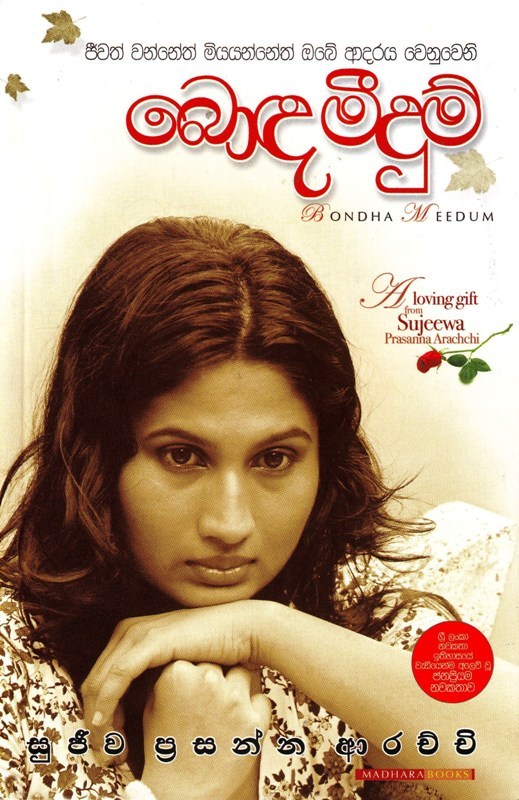


Sinhala has many words that are only found in Sinhala, or shared between Sinhala and Vedda and not etymologically derivable from Middle or Old Indo-Aryan. Some of the differences can be explained by the substrate influence of the parent stock of the Vedda language. He wrote the 377-page An anthology of Sinhalese literature up to 1815, selected by the UNESCO National Commission of Ceylon Substratum influence in Sinhala Īccording to Wilhelm Geiger, Sinhala has features that set it apart from other Indo-Aryan languages. During the career of Christopher Reynolds (1922–2015) as a Sinhalese lecturer at the SOAS, University of London, he extensively researched the Sinhalese language and its pre-1815 literature: the Sri Lankan government awarded him the Sri Lanka Ranjana medal for this. In 1815 the island of Ceylon came under British rule. the words mässā ("fly") and mäkkā ("flea"), which both correspond to Sanskrit makṣikā but stem from two regionally different Prakrit words macchiā and makkhikā (as in Pali). There are several cases of vocabulary doublets, e.g. Īn example of an Eastern feature is the ending -e for masculine nominative singular (instead of Western -o) in Sinhalese Prakrit. He cites the inscriptions of Asoka, none of which show this sound change. This is disputed by Muhammad Shahidullah who says that Sinhala Prakrit branched off from the Eastern Prakrits prior to this change. Sanskrit viṃśati "twenty", Sinhala visi-, Hindi bīs). Eastern Prakrit features Īccording to Wilhelm Geiger, an example of a possible Western feature in Sinhala is the retention of initial /v/ which developed into /b/ in the Eastern languages (e.g. vibāgaya "exam" Sinhalese Prakrit viṭṭa > Modern Sinhala viṭa) the loss of a vowel length distinction long vowels in the modern language are due to loanwords (e.g.kanavā "to eat" corresponds to Sanskrit khādati, Hindustani khānā) the loss of the aspiration distinction (e.g.The most important phonetic developments of Sinhala include: Modern Sinhala (13th c CE to the present).Medieval Sinhala (8th c CE to 13th c CE).Sinhala Prakrit (3rd c BCE to 4th c CE).The development of Sinhala is divided into four epochs: In the following centuries, there was substantial immigration from Eastern India ( Vanga Kingdom (Bengal), Kalinga, Magadha) which led to an admixture of features of Eastern Prakrits. History Īccording to the chronicle Mahavansa, written in Pali, Vanga kingdom's Prince Vijaya and his entourage merged with the Yakkha and later settlers from the Pandya kingdom. The name is sometimes glossed as "abode of lions", and attributed to a supposed former abundance of lions on the island. The name is a derivation from siṃha, the Sanskrit word for "lion". Sinhala ( Siṃhala) is a Sanskrit term the corresponding Middle Indo-Aryan ( Eḷu) word is Sīhala. Main article: Names of Sri Lanka § Sinhala It has two main varieties, written and spoken, and is a conspicuous example of the linguistic phenomenon known as diglossia. The closest relatives are the Vedda language (an endangered, indigenous creole still spoken by a minority of Sri Lankans, mixing Sinhala with an isolate of unknown origin and from which Old Sinhala borrowed various aspects into its main Indo-Aryan substrate), and the Maldivian language. The language of these inscriptions with long vowels and aspirated consonants is a Prakrit similar to Magadhi, a regional associate of the Middle Indian Prakrits that has been used during the time of the Buddha. The early form of the Sinhala language, is attested as early as the 3rd century BCE. Along with Pali, it played a major role in the development of Theravada Buddhist literature. Sinhala is one of the official and national languages of Sri Lanka. It is written using the Sinhala script, which is one of the Brahmic scripts a descendant of the ancient Indian Brahmi script closely related to the Grantha script. Sinhala is also spoken as the first language by other ethnic groups in Sri Lanka, totalling about 2 million people as of 2001. Sinhala ( / ˈ s ɪ n h ə l ə, ˈ s ɪ ŋ ə l ə/ SIN-hə-lə, SING-ə-lə සිංහල, siṁhala, ), sometimes called Sinhalese ( / ˌ s ɪ n( h) ə ˈ l iː z, ˌ s ɪ ŋ( ɡ) ə-/), is an Indo-Aryan language primarily spoken by the Sinhalese people of Sri Lanka, who make up the largest ethnic group on the island, numbering about 16 million.


 0 kommentar(er)
0 kommentar(er)
